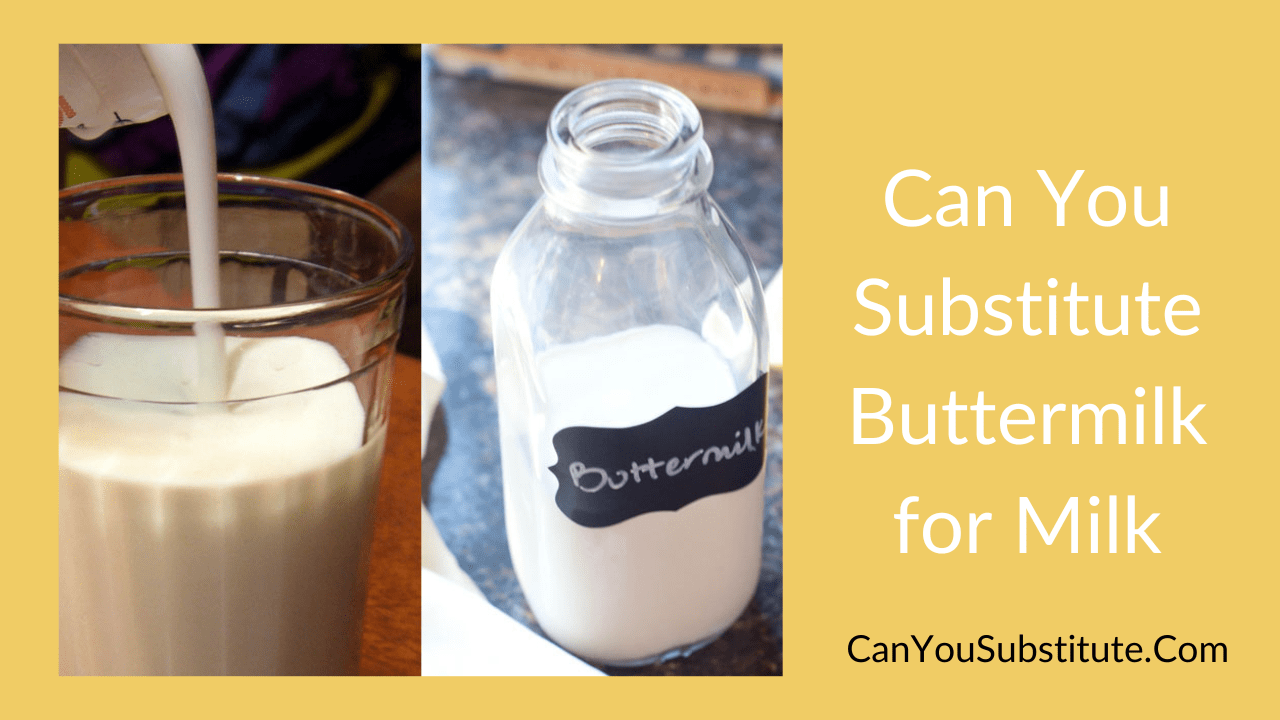Can You Substitute Buttermilk for Milk?: Regular milk and buttermilk are two dairy products that add more taste to the final product of the recipe. In case, your milk carton gives a half cup of milk and the recipe calls for more than that then substituting with another ingredient is the possible way to finish the recipe. If you are wondering whether or not can you substitute Buttermilk for Milk when baking & cooking? The answer to your query is explained in this guide. Scroll down the page and collect the information that you are looking for.

Can I Substitute Buttermilk For Milk In Cooking & Baking?
Yes, you can substitute buttermilk for milk in cooking and baking. Regular cow milk is a fresh dairy product whereas buttermilk is a fermented liquid that's formed by culturing and fermenting milk products like curd. You can also make buttermilk by churning butter from the curd and straining it. The strained liquid is called buttermilk. Both can be swapped for particular recipes like baked goods or cooking recipes like mac and cheese, mashed potatoes, etc. The substitution quantities or ratio is explained in the following section. Not only buttermilk there are other best substitutes for milk that you can try when you're out of milk. Some of them are linked here for your reference so grab the information and make use of it whenever you required it. Related Milk Substitutes Articles:
- Can You Substitute Evaporated Milk for Milk
- Can You Substitute Almond Milk For Milk
- Can You Substitute Half and Half for Milk
- Can You Substitute Heavy Cream for Milk
How Can You Substitute Buttermilk For Milk In Baked Goods & Cooking?
You can use buttermilk for milk in baked goods and cooking. For baked goods, the substitution ratio is 1:1 but you need to include more baking soda like 1/2 teaspoon of baking soda per cup of buttermilk. This helps to get the desired texture in the final product. When cooking recipes like mashed potatoes, soups, sauces, and marinating non-vegetarian or vegetarian ingredients, the substitution of buttermilk with respect to milk works great and it requires the same quantities or less than milk because it is thicker and sour in flavor. These recipes after cooking with buttermilk will be rich in creamier, tangy, buttery, and more appetizing.
Buttermilk Vs Milk in Baking
Buttermilk and milk look similar but their texture and taste are completely different from each other. Hence, both are not the same. The major key differences between buttermilk and milk are acidity, nutrition, and thickness. Below, you can see the explanation regarding these differences. Acidity: Buttermilk is more acidic in nature compared with regular dairy milk. This acid content will react with the leavening agent like baking powder and baking soda and gives the final product fluffier, and lighter textures and consistencies. Nutrition: You can find 99 calories and 2.2 grams of fat in a cup of buttermilk as it is made from low-fat dairy products. Thickness: Regular milk is thinner than buttermilk and the acid in it reduces the pH and causes clotting. Due to these differences between milk and buttermilk, baked goods like cakes, pancakes, muffins, etc. have distinct changes in taste and texture.
Can Buttermilk and milk be used interchangeably?
No, buttermilk and whole milk cannot be used interchangeably in most of the recipes as it tastes completely different from the milk, and also buttermilk is high in acid content. So, if the recipe calls for buttermilk then only use it else the final product gets changed in flavor and texture-wise. In baking, substituting buttermilk for milk is the best substitution as it gives fluffiness and tenderness. In cooking, you can only replace milk with buttermilk when the recipe asks else it changes the taste and texture of the recipe. Similar Posts:
- Can you substitute butter for oil
- Can you substitute butter for shortening
- Can You Substitute Baking Soda For Baking Powder
How To Prepare Homemade Buttermilk?
You can make buttermilk in various ways as explained below:
- Take cold milk and add 1 tbsp lemon juice or vinegar, mix well. Now, let it sit for 5 minutes, and add acid to thicken it.
- One more way is to add 1 tbsp apple cider vinegar to 1 cup of milk and give it some time to thicken at room temperature.
- With the help of a beater, beat the thick curd by adding water and it forms buttermilk from the curd.